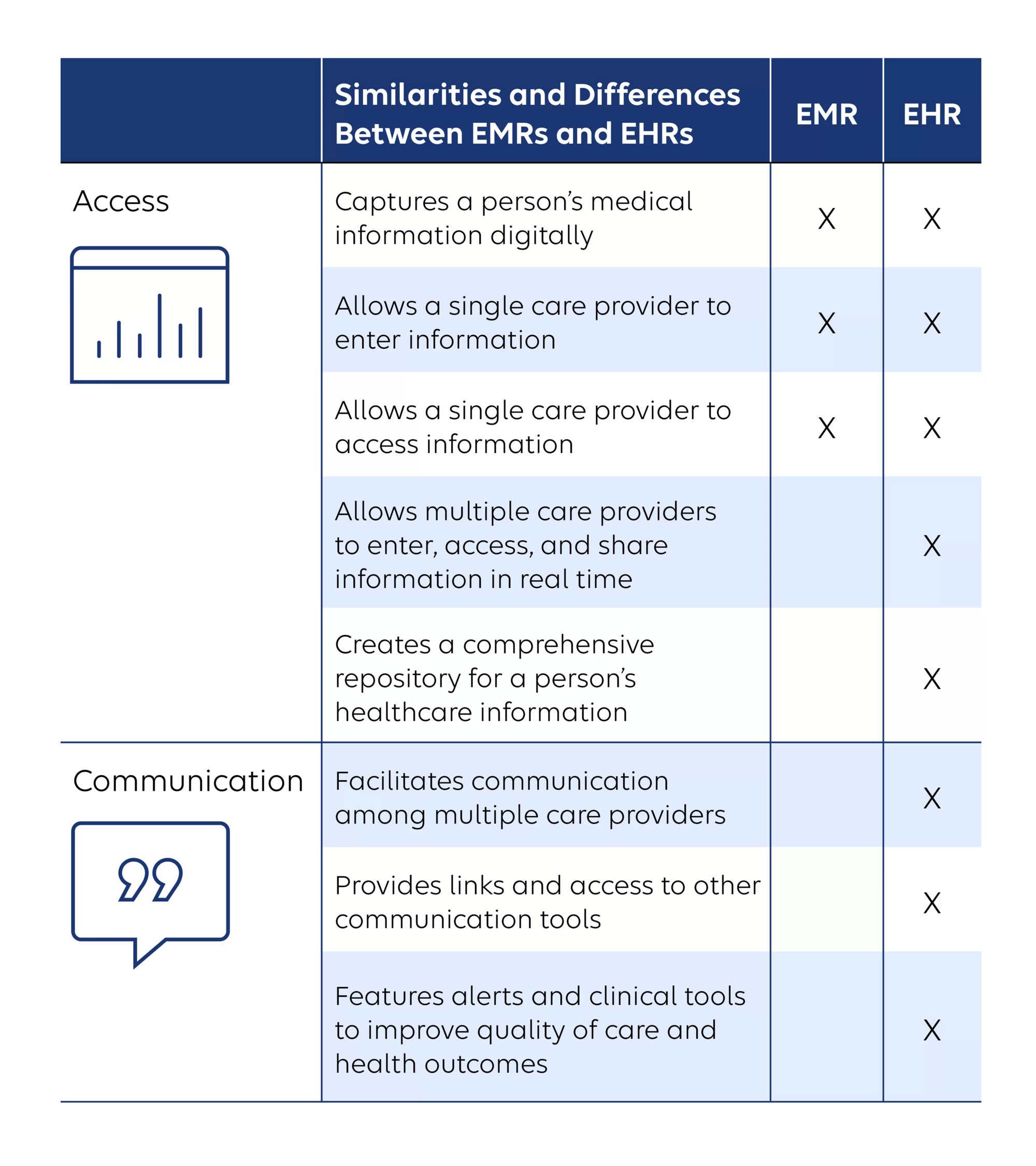What is the Difference Between an Electronic Health Record (EHR) and an Electronic Medical Record (EMR)?
Electronic Medical Records (EMR) and Electronic Health Records (EHR) are terms often used interchangeably, but they have distinct differences. Here’s a focused comparison of how EMRs and EHRs differ in terms of access and communication capabilities

Access
EMR Limitations:
- Single Practice Use: EMRs are designed for use within a single practice. They do not allow multiple care providers to enter, access, and share patient information in real time.
- Limited Information Repository: EMRs do not create a comprehensive repository of a person's healthcare information. They typically hold data pertinent only to the specific practice, which can lead to incomplete patient records when multiple providers are involved.
EHR Advantages:
- Real-Time Information Sharing: EHRs enable multiple care providers to enter, access, and share patient information in real time. This improves collaboration and coordination among different healthcare professionals.
- Comprehensive Data Repository: EHRs create a complete and integrated repository of a patient’s healthcare information, including data from various providers and specialties. This holistic view supports better patient care and continuity.
Communication
EMR Limitations:
- Limited Provider Communication: EMRs do not facilitate communication among multiple care providers. This can lead to fragmented care and inefficiencies.
- No Integrated Communication Tools: EMRs typically lack links and access to other communication tools, making it harder for providers to coordinate care.
- Absence of Alerts and Clinical Tools: EMRs generally do not feature alerts or clinical tools that help improve care quality and health outcomes.
EHR Advantages:
- Enhanced Provider Communication: EHRs facilitate communication among multiple care providers, supporting better collaboration and patient care.
- Integrated Communication Tools: EHRs often include links and access to various communication tools, such as secure messaging systems and integrated scheduling.
- Clinical Alerts and Tools: EHRs provide alerts and clinical tools designed to enhance care quality and outcomes, helping providers make informed decisions and respond to patient needs more effectively.
The ability to share complete information instantly is one of the main differences between an EMR and an EHR. An EMR captures information from a single care provider, which is only available to that one care provider. However, EHRs are designed to be used by multiple care providers and healthcare organizations.
Another difference is the ability of multiple care providers to not only share patient information but to contribute to EHRs. This facilitates sharing accurate data over time. Without EHRs, patients and/or care providers would still bear the administrative burden of arranging the transfer of the medical records to another care provider or multiple care providers. The receiving care providers then bear the additional administrative steps of ensuring the new information is integrated into their copy of the patients’ records.
The EHR automates direct access to these more complete records, making it much easier to gain a full picture of a person’s health status and history. This more complete picture means there are benefits of EHRs for patients, providers, and the healthcare industry.